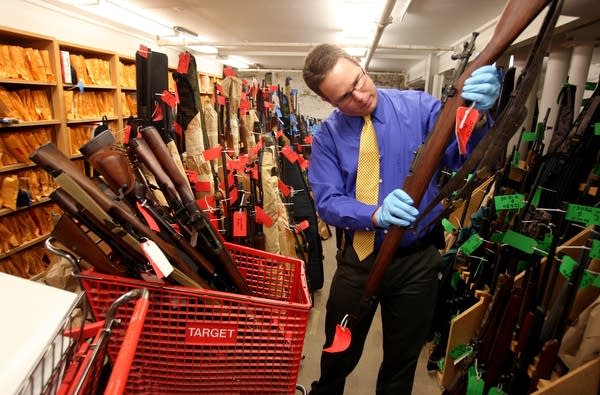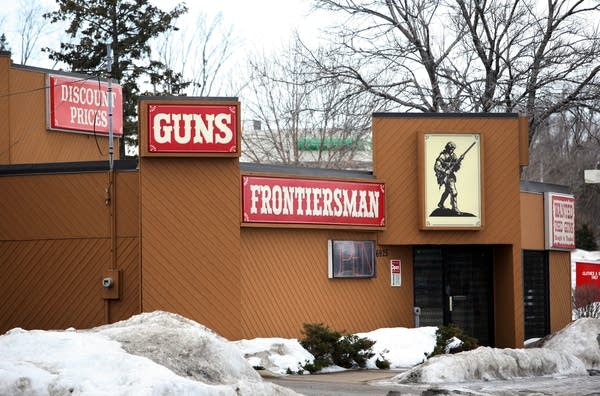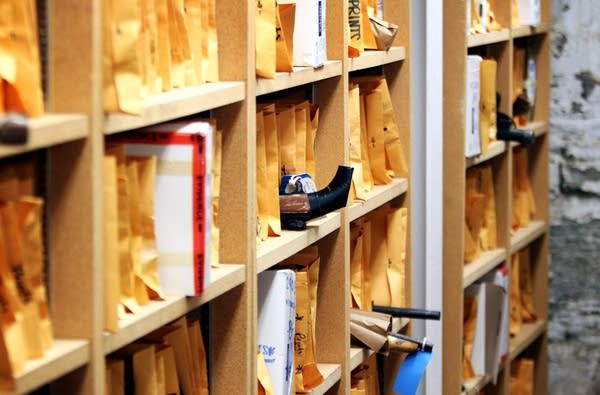Theft a prime source of illegally-obtained guns on Minneapolis streets
Go Deeper.
Create an account or log in to save stories.
Like this?
Thanks for liking this story! We have added it to a list of your favorite stories.

In January 2010, three men were gunned down during an apparent robbery attempt at the Seward Market in south Minneapolis. One of the victims worked at the store. The second victim was the clerk's cousin who stopped by to chat. The third was a man who just happened to walk in at the wrong time.
The report from the police homicide investigation shows that five shell casings found at the crime scene likely match a test casing provided by the maker of a .40-caliber pistol stolen from a St. Louis Park gun store.
Just a few weeks before the shooting, on Dec. 8, 2009, St. Louis Park police officers responded to an early morning alarm at the Frontiersman gun store, along a frontage road near Louisiana Ave. and Interstate 394.
The arriving officers found a back door pried open. Thieves stole 18 handguns, including a .40-caliber Springfield Armory XD40 semi-automatic pistol. The XD40 is a compact, high-end gun that stores sell for about $500.
Turn Up Your Support
MPR News helps you turn down the noise and build shared understanding. Turn up your support for this public resource and keep trusted journalism accessible to all.
According to the ballistics report, the handgun was likely used in the Seward Market killings.

Six guns from the burglary were recovered in 2010 -- one in Eagan, one in St. Paul and four in Minneapolis.
Minneapolis police did not recover a gun from the Seward market shootings, based on records filed in the case.
Last September, Minneapolis police arrested a man with one of the other guns stolen from the Frontiersman, a very similar .40-caliber pistol.
That man is the older brother of teenage Seward Market shooting co-defendant Ahmed Abdi Ali, who pleaded guilty to aggravated robbery charges. Police officials say Hennepin County and city attorneys declined to prosecute Ali's brother, so the case has been closed.
Accused gunman Mahdi Hassan Ali -- no relation to Ahmed Abdi Ali -- is scheduled to go to trial in September for murder.
STOLEN GUNS AND STRAW BUYERS

In 2009 — the same year as the Frontiersman break-in — 74 guns were reported stolen in burglaries from licensed gun dealers in Minnesota, according to the federal Bureau of Alcohol, Tobacco, Firearms and Explosives. That's a small portion of the more than 550 guns reported lost or stolen that year.
ATF special agent Bernard Zapor said most often the people who break into gun stores are gang members looking for quality guns they can use, or sell for a good price on the street.
In some of the more notorious break-ins, Zapor said, "We've had one that was a gang, and another one that was sort of loose-knit group of different gang members that had a social connection that committed this crime together."
Most guns used in crimes are obtained through straw purchases or from traffickers, Zapor said.
In a straw purchase, a person who is legally able to buy a gun, buys one for someone who is not. Gun traffickers are like straw purchasers, except they buy and sell more guns.
However, if the straw buyer or trafficker buys a gun from a licensed gun dealer, there will be a paper trail. That's because the buyer needs to first pass a state and federal background check. A licensed dealer is required to report to the Attorney General if someone buys more than one handgun within five business days.

There is a way for a person to buy a gun without showing proof they are legally able to buy one. Known as the "gun show loophole," it is an exemption to the state law requiring background checks on gun buyers. The loophole also allows private citizens to sell or transfer guns to someone without running a background check on them.
Gun buyers flock to the numerous gun shows held throughout Minnesota every month. On a recent Sunday, the Gun and Knife Show at the Anoka Armory was abuzz as hundreds of people, mostly men, walked by long, rectangular tables laden with a wide variety of weapons.
Some of the vendors were private citizens and could sell weapons to people without a background check.
Most, however, were licensed gun dealers, like Mark Nordin, who stood behind a table full of black AR-15 assault rifles.
Nordin said media coverage makes it seem like a lot of people are illegally buying guns at gun shows. But as a licensed dealer, he still has to run background checks at his shop in Oak Grove and at the Anoka Armory. Nordin said private gun sales happen all the time, mostly outside of gun shows.
"No different than if your grandfather wanted to give you a rifle, or you wanted to sell one of your rifles or handguns ... to the neighbor down the street," he said. "There's no law against private sales."

Private sales are legal -- but there are restrictions. Under state and federal law, it is a felony to knowingly sell a firearm to a minor. It is also a felony to provide a firearm to someone that the seller knows will use the gun to commit a crime.
Neither the ATF nor Minneapolis police can quantify the number of crime guns that have originated from gun shows. However, Minneapolis Deputy Police Chief Rob Allen estimates they make up just a small portion of guns recovered in Minneapolis. Instead, Allen said, the bulk of guns used in crimes are stolen from lawful gun owners.
"It is legal gun owners who, frankly, are fueling illegal gun violence in the city of Minneapolis," Allen said. "That's where the guns are coming from. So, at least make it harder for our criminals to obtain guns by securing the guns you have in your home."
MPR News also traced several other stolen guns which were either recovered at crime scenes or confiscated from felons.
- Last March, a man named Kingston Gaulden was caught with a .40-caliber Smith and Wesson pistol reported stolen from the Frontiersman. Gaulden told police he found the gun in an alley. A judge recently sentenced him to nearly three years in prison for being a felon in possession of a firearm.
- A .45-caliber Sig Sauer P2220, reported stolen three years ago from a house in Galesburg, Ill., was found on a felon in a north Minneapolis last March. Police are holding the gun and will return it to its rightful owner following the completion of an investigation.
- Last June, a man with six prior felonies was charged in federal court for possessing a Glock-19 that was reported stolen from Escondido, Calif. The man claims he bought the Glock for $150 from a man in Burnsville.
THE GUN VAULT
Stolen guns often wind up in the property and evidence unit of the Minneapolis Police Department.
"We take in an average of 900 weapons a year, and this covers a five-year span," unit supervisor Kerstin Hammarberg said. "So there's the math: 4,500 weapons."
In the large and narrow gun vault, fluorescent lights illuminate rows of different rifles and shotguns on racks, with their barrels pointed toward the ceiling. Brightly colored tags, which indicate the year the gun was recovered, hang from their barrels. Handguns — the majority of recovered weapons — are enclosed in manila envelopes and stacked side by side on wooden shelves along the walls.
You can see more pictures of the Minneapolis Police Department's gun vault here.
The room is a death row for recovered guns. If they aren't returned to their owners, or donated to a museum, or matched to another investigation, the guns will be destroyed, Hammarberg said. Guns are melted down and turned into rebar — the steel bars that reinforce sidewalks and roads.
Pointing to a camouflage-painted Beretta shotgun, police spokesman Sgt. William Palmer, a firearms aficionado, said the department has to destroy many quality guns altered by criminals.
"It's an A391 Xtrema 12-gauge shotgun," he said. "It's had the stock removed. It's had the barrel cut off. That's probably around $1,500 to $1,700 of new shotgun."
Palmer said the weapon looks like a lot of the hunting guns he sees that are stolen from their owners and modified by a person who wanted to conceal it. He said people saw off the barrels or the stocks of shotguns to make them easier to hide in a coat sleeve or a pant leg.
The police vault also contains vintage rifles and shotguns, even a German machine gun from World War II. He said such weapons should be on display in a museum or locked in a collector's vault.
But Palmer knows it's better to keep a dangerous weapon secured by police, or melt it into steel rods, than let it fall into the hands of someone who will use it to commit a crime.





